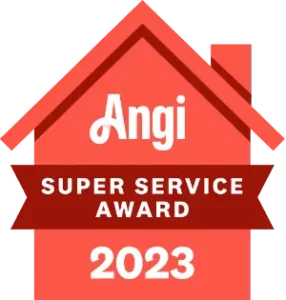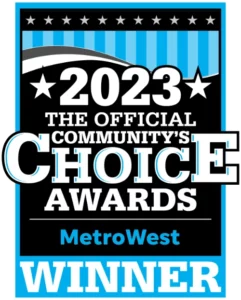FAQ
Questions? Browse these frequently asked questions to learn more about our award-winning service.
Can’t find what you’re looking for? Clear here to contact us.
Turf & Garden Care
Our design team never stops working throughout the year in order to provide the landscape designs that clients desire, that being said, it is best to contact us early in the year to plan your next landscape project. The H&H team works hard transforming landscapes from April to December, if the ground is in a workable state we will continue to provide new landscapes.
Have you ever heard of the 1/3 rule in regards to turf care? The goal is to maintain an acceptable turf height that looks great and is also acceptable for the intended use of the turf grass. Lawn mowing more that 1/3 of the total turf grass height can result in overall stress to the plants and created a weaker plant.
Turf grasses require the process of photosynthesis (along with every green plant) in order for successful growth. If the 1/3 rule is not followed the process of photosynthesis will be diminished and ultimately create a weaker plant.
Absolutely not! Grass clippings (also known at verdure) are a valuable resource of nutrients of natural fertilization such as nitrogen and other desirable nutrients. In addition, over time the deposing grass clipping will eventually turn to organic matter to improve your soil profile if you’re subject to sandy conditions. Of course, it is not desirable to have excessive grass clippings on a lawn and in this case bagging would be a better option.
Mowing the lawn at different angles, preferably right angles, each week will promote upright growth and minimize horizontal growth orientation.
All lawn mowing equipment meticulously maintained, including daily blade sharpening, decontamination washing and regularly scheduled services.
The decrease of total pore space can lead to decreased drainage within the soil profile, poor root growth and air exchange. What does this all mean?
Lack of water drainage will lead to wasted irrigation water due to runoff and the inability to reach the turf grass roots where it is needed.
With the inability for irrigation and/or rain water to reach deeper into the soil profile, the turf grass roots have no need to grow and search for needed water and therefore has no need to develop stronger root systems.
Oxygen is essential for root respiration and growth. In order for nutrient absorption into the plant it is required that oxygen is present. Oxygen has little to no presence with a compacted soil profile.
The thatch layer is the combination of living and dead stems, leaves and roots that are decomposing between the blades of turf grass and the soil. Thatch in a normal layer to be present and in fact beneficial to the overall ecosystem of a lawn. Thatch in the depth of about ½ inch will contribute to turf grass resiliency in heavy traffic situations.
However, excessive thatch that is thicker than ½ inch can contribute to possible turf grass diseases, inefficiency in water and nutrient adsorption.
On the contrary, grass clippings help promote healthy microorganisms that help decompose the thatch layer.
Following the one third rule in regards to mowing height versus overall turf grass height. Ensure mower blades are always sharp and raise the mowing height as the soil/air temperatures rise. Alleviate soil compaction to promote root growth along with eliminating weed competition in the turf grass.
This process starts with the proper identification of the insect and once this has been determined you will then choose the appropriate insecticide (traditional, biological or organic) to treat the lawn areas. The most important component to the process is the timing of application; the life cycle needs to be analyzed in order to maximize treatment.
This is a common lawn turf grass disease called red thread (also known as Pink Patch) as a result of low fertility, lack of sunlight and drought. There are some simple strategies for treating this issue and one of the most common is to simply maintain your proper fertility levels. Changing your irrigation schedule to longer watering intervals but less frequent while avoiding afternoon watering. Maintaining sharp mower blades along with bagging the grass clipping while mowing to avoid spread is essential. In some cases, inspection of the thatch layer be necessary.
Pruning helps maintain the shape and size of the shrub along with encouraging flowering, discourage unwanted pests and sometimes bring new life to old overgrown shrubs. If a shrub is left un-pruned eventually the shrub will become overtaken by its old woody stems.
Services
Simply give us a call or an email! We pride ourselves on responsive communication and education to the client. We love having a conversation and gathering useful information about your landscape needs. We will then schedule a date and time to perform a walk-through of the property. Clicking here will take you right to our contact page.
Starting with a call phone and in person meeting/walkthrough of the property, our goal is to understand your needs and wants from your landscape to provide a design that encompasses your ultimate goal. We then use the information gathered to develop a landscape plan along with overall cost to present to you.
Our second in-person meeting will involve presenting the landscape plan and quote to you along with discussing timeframes, required equipment, project goals, any and all special requests from the client.
Once our second meeting has been concluded and the landscape design has been finalized along with a signed agreement and 50% deposit. We will book a start date and begin the transformation!
We take pride in developing relationships with our clients on several different levels from management to the skilled and knowledgeable crew members that visit your property. There is little to no employee turnover which means you will see the same individuals on your property throughout the season. Employees are exposed to a long interview process that focuses on education, science and customer service to ensure that H&H is providing the highly level of service to the client.
Needham, Dover, Sherborn, Natick, Wellesley, Wayland, Weston, and Sudbury.
Boston, Brookline, Cambridge, Chestnut Hill, Concord, Dedham, Dover, Duxbury Lexington, Lincoln, Medfield, Natick, Needham, Newton, Newton Centre, Newtonville, Sherborn, Sudbury, Waban, Wayland, Wellesley, West Newton, Weston, and Westwood.
Yes, we offer snow plowing, shoveling and salt applications in limited areas that are Natick and surrounding towns.
Our landscape installations and estate care can be viewed at our Landscape Installation page.
H&H carries full liability insurance and workman’s compensation; these policies can be viewed upon request.
Billing
We accept checks, bank transfers, along with all major credit cards.
Recurring maintenance programs are billed at the end of each month.
Project payments require 50% deposit with balance due upon completion.
We do offer free consultations and quotes after a quick introductory phone call to understand your landscaping needs.

